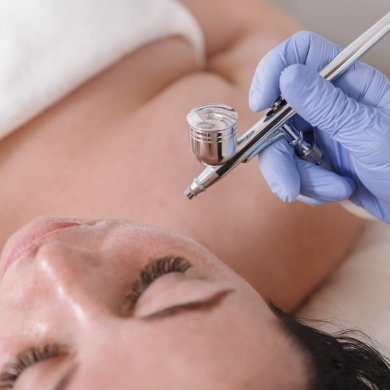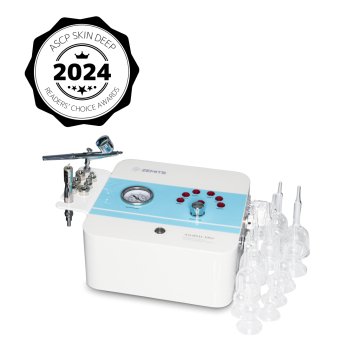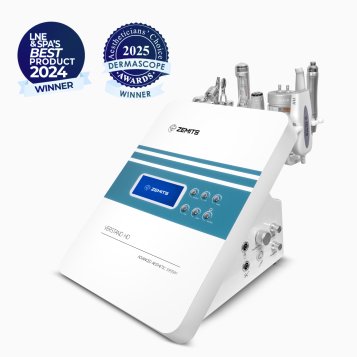Shop by type
Microdermabrasion & Oxygen Machines- Home / Catalog / Facial Equipment / Microdermabrasion Machines
Professional Microdermabrasion Machines
Elevate Your Skin Treatment Services with Professional Microdermabrasion Machines
At Advance Esthetic, we provide a curated selection of professional microdermabrasion machines designed to meet the evolving needs of modern skincare practices. Our machines ensure a gentle yet effective exfoliation process that rejuvenates the skin by removing dead skin cells, promoting a smoother and more youthful complexion.
Investing in a high-quality microdermabrasion machine from our collection allows skincare professionals to offer enhanced treatment services. Our machines come with the latest technology, ensuring ease of use, outstanding performance, and remarkable results. Explore our range and take a significant step towards providing exceptional skincare treatments that will leave your clients satisfied and looking forward to their next appointment.
Best Microdermabrasion Machines For Estheticians
Professional microdermabrasion machines are indeed valuable tools for estheticians and dermatologists looking to offer effective skincare treatments to their clients. These machines can help improve the appearance and texture of the skin, making them a popular choice in the beauty and aesthetics industry. Here are some considerations when choosing the best microdermabrasion machines for estheticians:
-
Type of Microdermabrasion: There are two main types of microdermabrasion machines: crystal microdermabrasion and diamond-tip microdermabrasion. Crystal machines use fine crystals to exfoliate the skin, while diamond-tip machines use a diamond-tipped wand. Consider which type aligns better with your business model and client preferences.
-
Machine Quality: Invest in high-quality machines from reputable manufacturers. Quality machines tend to be more durable, reliable, and efficient. Look for features such as adjustable suction levels, interchangeable tips, and user-friendly interfaces.
-
Training and Support: Ensure that the supplier offers comprehensive training and ongoing support for you and your staff. Proper training is essential to provide safe and effective treatments to your clients.
-
Client Needs: Consider the specific needs and skin types of your clients. Different machines may be better suited for addressing various skin concerns, such as acne, fine lines, or uneven texture.
-
Budget: Determine your budget for the equipment, including any additional accessories or maintenance costs. While quality machines may have a higher upfront cost, they can offer a better return on investment in the long run.
-
Warranty and Service: Check the warranty and service options provided by the manufacturer or supplier. A good warranty can provide peace of mind in case of any equipment issues.
-
Additional Features: Some microdermabrasion machines come with extra features such as LED therapy, oxygen infusion, or ultrasonic exfoliation. These features can enhance the overall effectiveness of your treatments.
-
Client Safety: Ensure that the equipment meets safety standards and is properly maintained to minimize any risks during treatments.
-
Client Comfort: Consider the comfort of your clients during treatments. Machines with adjustable suction levels and ergonomic designs can enhance the overall client experience.
What Is Microdermabrasion Equipment?
Microdermabrasion equipment is a skincare device used in the beauty and aesthetics industry to perform microdermabrasion treatments. Microdermabrasion is a non-invasive exfoliation procedure that helps improve the appearance and texture of the skin. The equipment typically includes a handheld device with various components and technologies designed to remove the outermost layer of dead skin cells, stimulate collagen production, and address various skin concerns.
What Benefits Your Clients Can Get From Microdermabrasion Machine?
Microdermabrasion machines offer several benefits to clients seeking skin rejuvenation and improvement in their skin's appearance. Here are some of the key benefits that clients can expect from microdermabrasion treatments:
-
Exfoliation: Microdermabrasion effectively exfoliates the top layer of dead skin cells, helping to improve skin texture and promote a smoother complexion. This removal of dead skin cells can also unclog pores, reducing the likelihood of acne breakouts.
-
Even Skin Tone: Microdermabrasion can help reduce the appearance of skin discoloration, including sunspots, age spots, and hyperpigmentation. It can lead to a more even skin tone and a reduction in the visibility of dark spots.
-
Fine Lines and Wrinkles: The exfoliation and stimulation of collagen production induced by microdermabrasion can help minimize the appearance of fine lines and wrinkles, leading to a more youthful look.
-
Acne Scars: Microdermabrasion can be effective in reducing the appearance of mild acne scars. It smooths the skin's surface and encourages the growth of new, healthier skin cells.
-
Improved Texture: Clients often notice an improvement in the overall texture of their skin after microdermabrasion treatments. The skin feels softer, smoother, and more refined.
-
Minimal Discomfort: Microdermabrasion is a non-invasive and virtually painless procedure, making it suitable for individuals who prefer gentle treatments with minimal discomfort.
-
No Downtime: Unlike more aggressive skin treatments, microdermabrasion typically requires no downtime. Clients can return to their daily activities immediately after treatment.
-
Quick Sessions: Microdermabrasion sessions are relatively quick, usually lasting between 20 to 40 minutes, making it convenient for clients with busy schedules.
-
Safe for Most Skin Types: Microdermabrasion is generally safe for individuals with various skin types and tones. It is a versatile treatment option that can benefit a wide range of clients.
-
Hydration: Microdermabrasion can improve the skin's ability to absorb and retain moisture, leading to better hydration and a healthier skin barrier.
-
Youthful Appearance: Regular microdermabrasion sessions can help clients maintain a youthful appearance by addressing signs of aging and promoting collagen production.
-
Boost in Confidence: Clients often experience an increase in confidence and self-esteem as they see improvements in their skin's appearance and texture.
It's important to note that while microdermabrasion can deliver noticeable results, several sessions may be required to achieve the desired outcome, and results may vary depending on individual skin conditions. Estheticians and skincare professionals should consult with their clients to assess their specific skincare goals and tailor the treatment plan accordingly. Additionally, clients should follow post-treatment skincare recommendations to maintain the benefits of microdermabrasion.
Types Of Microdermabrasion Systems
Microdermabrasion systems are popular tools in the skincare industry, and they come in two primary types: Crystal Microdermabrasion and Diamond Microdermabrasion. These two methods achieve similar results but utilize different techniques and equipment. Here's a closer look at each type:
-
Crystal Microdermabrasion:
- How it Works: Crystal microdermabrasion employs the use of super-fine crystals, typically aluminum oxide or sodium bicarbonate, to exfoliate the skin's surface. The crystals are delivered onto the skin's surface through a handpiece, which is then passed over the treatment area. Simultaneously, a vacuum system suctions away the used crystals along with the exfoliated skin cells and impurities.
- Exfoliation: The abrasive action of the crystals helps to remove the outermost layer of dead skin cells, promoting skin renewal and a smoother complexion.
- Benefits: Crystal microdermabrasion can improve skin texture, reduce the appearance of fine lines and wrinkles, diminish age spots and sun damage, and enhance overall skin brightness.
- Suitability: This method is suitable for a wide range of skin types but may not be ideal for individuals with very sensitive or easily irritated skin.
- Results: Clients often experience immediate improvements in skin texture and radiance after a single session, with cumulative benefits achieved over a series of treatments.
-
Diamond Microdermabrasion:
- How it Works: Diamond microdermabrasion utilizes a handheld device with a diamond-encrusted tip instead of crystals. The diamond tip is gently moved across the skin's surface, exfoliating the outer layer of dead skin cells. A vacuum mechanism then suctions away the exfoliated skin cells and debris.
- Exfoliation: The diamond tip provides controlled exfoliation, allowing for precise treatment and targeting specific areas. It offers a more controlled and less abrasive exfoliation compared to crystal microdermabrasion.
- Benefits: Diamond microdermabrasion provides similar benefits as crystal microdermabrasion, including improved skin texture, reduced signs of aging, and enhanced skin radiance.
- Suitability: Diamond microdermabrasion is well-suited for sensitive skin types and individuals concerned about potential irritation from crystal particles.
- Results: Clients can achieve noticeable improvements in their skin's appearance and feel minimal discomfort during the treatment.
How Do Microdermabrasion Machines Work?
Microdermabrasion machines are popular tools in the skincare industry for their ability to rejuvenate and improve the appearance of the skin. They work through a process of exfoliation and suction to remove dead skin cells, impurities, and surface imperfections. Here's how microdermabrasion machines work:
-
Exfoliation: The microdermabrasion process begins with the exfoliation of the skin's outermost layer, known as the stratum corneum. This layer consists of dead skin cells, impurities, and debris that can make the skin appear dull, rough, and congested.
-
Abrasive Action: Microdermabrasion machines use one of two main methods for exfoliation:
-
Crystal Microdermabrasion: In this method, fine abrasive crystals, such as aluminum oxide or sodium bicarbonate, are propelled onto the skin's surface using a handheld wand. These crystals are abrasive and work to gently abrade the outer layer of the skin.
-
Diamond Microdermabrasion: Diamond-tipped wands are used in this method. The diamond tip, which can vary in coarseness, is applied directly to the skin. As the esthetician or practitioner moves the wand across the treatment area, the diamond tip exfoliates the skin.
-
-
Vacuum Suction: Microdermabrasion machines are equipped with a vacuum system. This vacuum suction serves several important functions:
- It helps to lift and remove the exfoliated skin cells and crystals from the skin's surface.
- The suction also stimulates blood circulation and lymphatic drainage in the treated area, promoting a healthy complexion.
- By creating a controlled vacuum, the machine ensures that the exfoliation process is both effective and precise.
Microdermabrasion Treatment
Microdermabrasion is a popular and minimally invasive cosmetic procedure that aims to rejuvenate and improve the appearance of the skin. It works by gently exfoliating the outermost layer of the skin, known as the stratum corneum, which consists of dead skin cells and other debris. This exfoliation process can be performed using one of two main methods: crystal microdermabrasion or diamond microdermabrasion.
What Is Microdermabrasion Treatment?
Microdermabrasion is a non-invasive and relatively gentle procedure that requires little to no downtime. It is suitable for a variety of skin types and concerns, making it a popular choice for those seeking skin rejuvenation and a refreshed complexion. However, it is essential to consult with a licensed skincare professional to determine if microdermabrasion is suitable for your specific skin needs and concerns.
Who Needs Microdermabrasion Treatment?
Microdermabrasion is a versatile and safe skincare procedure that can benefit a wide range of individuals with various skin types and concerns. Here are some of the common skin issues and conditions that can be addressed with microdermabrasion treatment:
-
Acne and Acne Scars: Microdermabrasion can help exfoliate the skin, remove clogged pores, and reduce the appearance of acne blemishes. It can also assist in minimizing the appearance of acne scars over time.
-
Fine Lines and Wrinkles: The exfoliating action of microdermabrasion can improve skin texture, smooth out fine lines, and reduce the visibility of wrinkles. It promotes collagen production, which contributes to a more youthful complexion.
-
Hyperpigmentation and Dark Spots: Microdermabrasion can lighten and reduce the appearance of dark spots, sunspots, and areas of hyperpigmentation, resulting in a more even skin tone.
-
Large Pores: By clearing away dead skin cells and debris, microdermabrasion can help minimize the appearance of enlarged pores, making the skin look smoother and more refined.
-
Melasma: While melasma is a more challenging pigmentation concern, microdermabrasion may be used as part of a comprehensive treatment plan to improve its appearance when performed by a trained professional.
-
Uneven Skin Tone: Microdermabrasion can enhance skin clarity, reduce blotchiness, and promote a more balanced and uniform skin tone.
-
Dull or Dry Skin: The exfoliation provided by microdermabrasion can revitalize dull and dry skin, leaving it looking fresher, smoother, and more hydrated.
-
Sun Damage: Over time, sun-damaged skin can benefit from microdermabrasion by reducing the appearance of sunspots and improving overall skin texture.
-
Preventative Care: Microdermabrasion can also be used as a preventive measure to maintain healthy, youthful-looking skin and slow the visible signs of aging.
-
Teenage Skin Concerns: Microdermabrasion is safe for teenagers (typically over the age of 12) and can help address common adolescent skin issues like acne, blackheads, and whiteheads.
Microdermabrasion Results
Microdermabrasion is known for its ability to deliver noticeable and immediate improvements to the skin's texture and appearance, especially after the first treatment session. Here are some of the results and benefits that individuals commonly experience with microdermabrasion:
-
Improved Skin Texture: Microdermabrasion exfoliates the outermost layer of the skin, removing dead skin cells, rough patches, and uneven texture. This leaves the skin feeling smoother and more refined.
-
Brighter Complexion: The removal of dull and dead skin cells reveals a brighter and more radiant complexion. Many people notice an immediate improvement in the skin's overall brightness.
-
Reduced Blackheads and Whiteheads: Microdermabrasion can effectively dislodge and remove blackheads and whiteheads, leading to clearer pores and a reduction in acne-related concerns.
-
Minimized Fine Lines and Wrinkles: While significant wrinkle reduction may require multiple sessions, microdermabrasion can immediately soften the appearance of fine lines and wrinkles. Over time, it promotes collagen production, contributing to longer-lasting improvements.
-
Even Skin Tone: Microdermabrasion helps reduce uneven skin tone, including areas of hyperpigmentation and sun damage. This results in a more uniform and balanced complexion.
-
Reduced Pore Size: The treatment can help minimize the appearance of enlarged pores by clearing away debris and congestion, making the skin look smoother and more refined.
-
Enhanced Product Absorption: After microdermabrasion, skincare products can penetrate more effectively into the skin, increasing their overall effectiveness.
-
Youthful Appearance: Regular microdermabrasion sessions can contribute to a more youthful and rejuvenated appearance, particularly when used as part of an ongoing skincare routine.
How Often to Get Microdermabrasion Treatment?
The frequency of microdermabrasion treatments can vary based on individual skin concerns, goals, and sensitivity levels. Here are some general guidelines for the recommended frequency of microdermabrasion treatments:
-
Weekly Treatments: Some individuals with specific skin conditions or those looking for more immediate results may opt for weekly microdermabrasion treatments. However, this frequency is typically recommended for a limited time, such as 4-6 sessions, to address specific concerns.
-
Bi-Weekly or Every Two Weeks: Bi-weekly treatments may be suitable for individuals with mild to moderate skin concerns who want to maintain their results or experience ongoing skin rejuvenation. It provides a balance between frequent treatments and allowing the skin some recovery time.
-
Monthly Treatments: Monthly microdermabrasion treatments are a common choice for maintenance and long-term skin improvement. Many individuals find that this frequency helps address concerns such as fine lines, uneven skin tone, and texture while allowing the skin to recover and regenerate between sessions.
-
As-Needed Basis: Some people choose to have microdermabrasion treatments on an as-needed basis. This approach is suitable for those who only seek treatment occasionally or for special occasions when they want their skin to look its best.
What Are The Side Effects Of Microdermabrasion? Does it hurt?
Microdermabrasion is generally considered a safe and minimally invasive procedure with few side effects, most of which are mild and temporary. Here are some common side effects and considerations associated with microdermabrasion:
-
Redness: Immediately after the treatment, you may experience some redness, similar to a mild sunburn. This redness typically subsides within a few hours to a day.
-
Sensitivity: Your skin may feel more sensitive than usual after microdermabrasion. It's essential to protect your skin from sun exposure and avoid harsh skincare products immediately after the treatment.
-
Bruising: In rare cases, individuals with very sensitive or thin skin may experience minor bruising. This is usually temporary and fades within a few days.
-
Dryness and Flakiness: As the outer layer of dead skin cells is exfoliated, your skin may feel dry and flaky. This is a normal part of the skin's renewal process. Using a gentle moisturizer can help alleviate dryness.
-
Stinging or Tingling Sensation: Some people may experience a mild stinging or tingling sensation during the treatment. This sensation is typically well-tolerated and not painful.
-
Sun Sensitivity: Your skin may be more sensitive to sunlight immediately after microdermabrasion. It's crucial to wear sunscreen with broad-spectrum SPF protection to shield your skin from UV damage.
-
Minor Swelling: In some cases, minor swelling may occur, especially if you have sensitive skin. Swelling is usually temporary and resolves within a day.
It's important to note that these side effects are generally mild and short-lived. Most people can return to their regular activities immediately after a microdermabrasion session. If you have specific skin concerns or conditions, it's advisable to consult with a skincare professional or dermatologist before undergoing microdermabrasion to ensure that it's a suitable treatment for your skin type.
Regarding discomfort, microdermabrasion is generally well-tolerated and not painful. Clients may experience a mild scratching or sandpaper-like sensation during the procedure, but it is typically not uncomfortable. The sensation can vary depending on the individual's pain tolerance and the specific microdermabrasion device used. However, most individuals find the treatment to be gentle and manageable.
What Is The After-Care For Microdermabrasion?
Proper aftercare following a microdermabrasion treatment is essential to ensure the best results and minimize any potential side effects. Here are some essential aftercare tips to follow:
-
Use Sunscreen: Your skin will be more sensitive to the sun after microdermabrasion. Apply a broad-spectrum sunscreen with at least SPF 30 to protect your skin from UV damage. Avoid direct sun exposure, and consider wearing a wide-brimmed hat and sunglasses when outdoors.
-
Avoid Direct Sunlight: Try to stay out of direct sunlight as much as possible for the first few days after treatment. If you must go outside, seek shade or wear protective clothing.
-
Skip Harsh Products: Avoid using skincare products that contain harsh ingredients, such as retinoids, alpha hydroxy acids (AHAs), or beta hydroxy acids (BHAs), for a few days after microdermabrasion. Stick to gentle, hydrating products.
-
Moisturize: Keeping your skin hydrated is essential for the healing process. Use a gentle, fragrance-free moisturizer to soothe and hydrate your skin.
-
Avoid Touching or Scratching: Refrain from touching, picking, or scratching your skin after the treatment. Doing so can introduce bacteria and lead to infection or scarring.
-
Limit Makeup: If possible, avoid applying makeup immediately after microdermabrasion. If you need to wear makeup, choose mineral-based products that are less likely to clog pores and irritate the skin.
-
Stay Hydrated: Drink plenty of water to help your body and skin recover more effectively.
-
Avoid Heat and Steam: For the first few days after treatment, avoid hot showers, saunas, steam rooms, and strenuous exercise. Excessive heat can irritate the skin.
-
Use Gentle Cleansers: Use a mild, non-abrasive cleanser to wash your face. Avoid harsh or exfoliating cleansers for a few days.
-
Follow Your Provider's Recommendations: Your skincare professional may provide specific post-treatment instructions tailored to your skin type and the specific microdermabrasion machine used. Follow their guidance for the best results.
How Long do the Effects of Microdermabrasion Last?
The duration of the effects of microdermabrasion can vary from person to person and depends on several factors, including your skin type, the specific skin concerns being addressed, and your skincare routine. Here are some general guidelines:
-
Immediate Results: After a microdermabrasion treatment, you can expect to see immediate results, including smoother and brighter skin. These initial results are typically noticeable for a few days to a week.
-
Short-Term Benefits: Microdermabrasion can provide short-term benefits for specific skin concerns such as improving the appearance of fine lines, mild acne scars, and uneven skin texture. These benefits can last for a few weeks to a couple of months.
-
Long-Term Benefits: To maintain and extend the results of microdermabrasion, most people choose to undergo regular treatments. The frequency of these treatments can vary, but many individuals opt for monthly sessions. Consistent treatments over time can lead to longer-lasting improvements in skin texture, tone, and overall appearance.
-
Skin Care Maintenance: The longevity of the results also depends on your skincare routine. Using gentle and hydrating skincare products, along with regular sun protection, can help preserve the benefits of microdermabrasion and promote healthier, more youthful-looking skin.
-
Individual Factors: Your age, skin type, and the specific skin concerns you're addressing can influence how long the effects of microdermabrasion last. Younger individuals with milder skin issues may experience longer-lasting results compared to older individuals with more advanced concerns
Microdermabrasion Pros And Cons
Microdermabrasion is a popular skincare procedure that offers several benefits, but it also has some limitations and potential drawbacks. Here are the pros and cons of microdermabrasion:
Pros:
-
Exfoliation: Microdermabrasion provides effective exfoliation by removing dead skin cells from the surface, resulting in smoother and more radiant skin.
-
Versatility: It can address a variety of skin concerns, including fine lines, wrinkles, acne scars, sun damage, enlarged pores, and uneven skin texture and tone.
-
Non-Invasive: Microdermabrasion is a non-invasive procedure, meaning it doesn't require incisions or needles, reducing the risk of complications and downtime.
-
Minimal Discomfort: Most individuals experience minimal discomfort during the procedure, often described as a mild scratching or tingling sensation.
-
No Downtime: There is little to no downtime associated with microdermabrasion, allowing you to resume your regular activities immediately after treatment.
-
Short Treatment Sessions: Microdermabrasion sessions are typically short, making it a convenient option for individuals with busy lifestyles.
-
Safe for Most Skin Types: It is generally safe for all skin types and colors, with few contraindications.
Cons:
-
Superficial Effects: Microdermabrasion primarily addresses superficial skin concerns and may not provide significant improvement for deep wrinkles or scars.
-
Multiple Sessions: To achieve and maintain desired results, multiple sessions are usually required, which can be time-consuming and may require a financial commitment.
-
Skin Sensitivity: Some individuals may experience temporary redness, swelling, or sensitivity immediately after the procedure, which typically subsides within a day or two.
-
Bruising or Discoloration: Prolonged or aggressive use of the equipment can lead to bruising or discoloration in some cases.
-
Limited to Specific Concerns: While it can improve various skin issues, it may not be suitable for treating certain conditions like deep scars, cystic acne, or warts.
-
Maintenance: To maintain results, ongoing treatments may be necessary, which can add to the overall cost.
-
Not a One-Time Solution: Microdermabrasion is not a one-time solution for skincare concerns and may need to be combined with other treatments or skincare products for optimal results.
Microdermabrasion Cost in the US
The cost of microdermabrasion in the United States can vary widely based on several factors, including the location of the clinic, the expertise of the provider, and the type of microdermabrasion being used. On average, you can expect to pay around $100 to $200 per session for microdermabrasion.
It's important to note that the cost can also be influenced by whether you choose a medical spa, dermatologist's office, or esthetician's clinic for the procedure. Medical settings may charge more than non-medical facilities due to the involvement of licensed medical professionals.
Additionally, some clinics offer package deals or discounts for multiple sessions, which can help reduce the overall cost. Keep in mind that the number of sessions needed to achieve your desired results may vary, so discuss your treatment plan and pricing options with your chosen provider.
What Are The Other Names Of Microdermabrasion Facial Treatment?
Microdermabrasion facial treatment is also known by several other names and variations. These include:
- Microderm: A shortened form of microdermabrasion, often used informally.
- Microdermabrasion Facial: The full name for the treatment, indicating that it is performed on the face.
- Diamond Microdermabrasion: A specific type of microdermabrasion that uses a diamond-tipped wand for exfoliation.
- Crystal Microdermabrasion: Another type of microdermabrasion that uses fine crystals for exfoliation.
- Microdermabrasion Peel: Referring to the exfoliating and peeling effect of the treatment on the skin.
- Microexfoliation: A term used to emphasize the gentle exfoliation provided by microdermabrasion.
- Diamond Peel: A colloquial term used for diamond microdermabrasion.
- Skin Resurfacing: Reflecting the treatment's ability to improve skin texture and appearance.
- Dermabrasion: Although not the same as microdermabrasion, some people may use this term interchangeably.
- Skin Polishing: Describing the smoothing and refining effect of the treatment on the skin's surface.
Microdermabrasion Alternatives
The cosmetic procedures available should promote the overall health and well-being of the client's skin. Depending on your skin concerns, you can select from a variety of treatments to achieve the best results possible.
Microdermabrasion Vs RF Lifting
Microdermabrasion exfoliates the outermost layer of the skin to get rid of various skin concerns and the dull surface-level skin cells to repair the overall tone, texture, and complexion of your skin. The main goal of RF Lifting is stimulating collagen production. The procedure uses frequency waves to heat the deep layer of the skin which will cause skin tightening, and in the long run, producing brand new collagen and elastin fibers. RF Lifting however is not available to all skin types. People who have very loose and saggy skin, deep wrinkles, and advanced signs of aging may not achieve the results desired.
Microdermabrasion Vs Hydrodermabrasion
Microdermabrasion stimulates cell turnover and rejuvenation of the skin. It utilizes either crystals or a diamond tip to slough away the surface of the skin. Hydrodermabrasion is a great option when you have a sensitive skin. It uses oxygen and water to exfoliate without the use of crystals and textured wands. Since hydrodermabrasion uses water, it is a more gentle procedure to remove cell build up.
Microdermabrasion Vs Microcurrent
Microcurrent utilizes gentle electrical impulses onto the face muscles. The low-grade electrical current shall stimulate collagen, thus, offers treatment for a wider range of skin problems. The muscles are meant to be trained in order to lift and sculpt the face. Microdermabrasion is a non-invasive procedure using crystals and diamond tip to treat a variety of skin impurities.
Microdermabrasion Vs Ultrasonic Skin Scrubber
Microdermabrasion uses crystals and diamond tip to remove dead skin cells and unclog pores to even out skin tone while stimulating blood flow to give a youthful, glowing skin. Ultrasonic Skin Scrubber uses an electronic device producing ultrasonic sound waves to deeply unclog pores and cleanse the skin resulting to a smooth and pure complexion. This treatment is suitable to clients who have sensitive and thin skin.
Diamond Microdermabrasion Vs Crystal Microdermabrasion
Diamond Microdermabrasion uses a diamond tip to pass over the skin. The diamond tip shall be used to slough away the outermost part of the skin, and the exfoliated particles shall be vacuumed away using the same wand.
Crystal Microdermabrasion utilizes a special device that causes the flow of aluminum oxide crystals onto the skin. As the surface-level dead skin cells are abraded off the skin, the system uses a vacuum to suck up these cells and dirt.
Performing Microdermabrasion Treatment
Who Can Use Professional Microdermabrasion Machine
Microdermabrasion treatments are typically performed by licensed estheticians, dermatologists, or trained skincare professionals. These professionals receive specific training in the use of microdermabrasion equipment and techniques to safely and effectively administer the treatment. It's important to seek a qualified and experienced practitioner to ensure a successful and safe procedure.
In some states or countries, there may be regulations governing who can perform microdermabrasion treatments, so it's essential to check with local licensing boards or regulatory authorities to ensure that the practitioner you choose is properly credentialed and licensed to perform the procedure. Always opt for a reputable and licensed skincare professional or clinic to undergo microdermabrasion treatments for the best results and safety.
How to Use An Microdermabrasion Machine?
Using a microdermabrasion machine typically involves the following steps, but it's crucial to follow the specific instructions provided by the manufacturer of your machine, as different machines may have slight variations in their operation:
-
Prepare the Skin:
- Begin with clean, dry skin free of makeup, lotions, or oils.
- Tie back hair or use a headband to keep it away from the face.
-
Set Up the Machine:
- Ensure that the machine is properly set up, including connecting any necessary attachments or handpieces.
-
Adjust the Settings:
- Depending on your machine, adjust the settings for the desired level of abrasion, vacuum suction strength, and other parameters.
- Be sure to follow the manufacturer's guidelines for the specific treatment area and skin type.
-
Start the Treatment:
- Hold the machine's handpiece and apply it to the treatment area.
- Typically, you'll move the handpiece in a controlled, systematic pattern over the skin.
- Follow the manufacturer's recommendations for the number of passes and the speed of movement.
- The machine will exfoliate the skin by either emitting fine crystals or using a diamond-tipped handpiece while simultaneously suctioning away exfoliated particles.
-
Post-Treatment Care:
- After completing the microdermabrasion treatment, apply a gentle, soothing moisturizer or a post-treatment serum recommended by your skincare professional.
- Apply sunscreen with at least SPF 30 to protect your skin from UV damage, as it may be more susceptible to sunburn immediately after the procedure.
-
Follow Aftercare Instructions:
- Your skincare professional will provide you with specific aftercare instructions based on your skin type and the intensity of the treatment.
- Follow these instructions carefully to ensure proper healing and optimal results.
-
Maintain Your Treatment Schedule:
- Microdermabrasion treatments are often done in a series to achieve the best results. Follow your practitioner's recommended treatment schedule.
Microdermabrasion Treatment Protocol
The microdermabrasion treatment protocol you've provided outlines the basic steps involved in performing a microdermabrasion procedure. Here's a breakdown of each step:
-
Cleansing: Start by cleansing the client's skin using a gentle, non-oily, and fragrance-free cleanser. This step helps remove any makeup, dirt, or impurities from the skin's surface.
-
Pat Dry: After cleansing, gently pat the skin dry with a clean towel or tissue. Avoid rubbing the skin, as it may be sensitive.
-
Skin Preparation: To ensure proper treatment, pull the skin taut using your thumb and middle finger. This helps create a smooth surface for the microdermabrasion device to glide over.
-
Treatment: Using the microdermabrasion device, perform the exfoliation by moving it in a sweeping action across the skin. The device typically emits fine crystals or uses a diamond-tipped handpiece to exfoliate the outermost layer of the skin. Ensure even coverage of the treatment area.
-
Focused Areas: If there are specific areas that require more attention or have more pronounced concerns, you can return to those areas to provide additional exfoliation.
-
Residue Removal: After completing the treatment, wipe away any remaining residue of dead skin cells or exfoliated particles using a clean, damp cloth.
-
Toning: Apply a gentle toner to the skin to help balance its pH and prepare it for subsequent products.
-
Moisturization: Moisturize the skin with a hydrating and soothing moisturizer. This step helps replenish moisture and maintain skin hydration.
-
Sunscreen: Finish the treatment by applying sunscreen with at least SPF 30 to protect the skin from UV damage. Microdermabrasion can temporarily increase the skin's sensitivity to the sun, so sun protection is essential.
How Long To Wait Between Microdermabrasion Treatments?
The recommended interval between microdermabrasion treatments can vary depending on several factors, including the client's skin condition, treatment goals, and the specific microdermabrasion system being used. Here are some general guidelines for the waiting period between treatments:
-
Maintenance Treatments: For clients seeking ongoing maintenance and skin rejuvenation, treatments are typically spaced about 2 to 4 weeks apart. This interval allows for optimal results while giving the skin time to recover and regenerate between sessions.
-
Acne or Skin Concerns: Clients with specific skin concerns, such as acne or hyperpigmentation, may benefit from more frequent treatments initially. In such cases, treatments may be scheduled every 1 to 2 weeks until the desired improvement is achieved, and then transitioned to a maintenance schedule.
-
Sensitive Skin: Clients with sensitive or easily irritated skin may require longer intervals between treatments, such as 4 to 6 weeks. This allows the skin to fully recover and reduce the risk of over-exfoliation.
-
Post-Treatment Assessment: After each microdermabrasion session, it's essential to assess the client's skin and response to the treatment. The skincare professional can then adjust the treatment frequency based on the client's progress and needs.
-
Customized Plans: Some clients may benefit from customized treatment plans that involve alternating microdermabrasion with other skincare treatments, such as chemical peels or facials. The timing of these treatments can be determined based on the overall skincare plan.
Microdermabrasion Treatment Areas
Microdermabrasion is a versatile skincare treatment that can be performed on various areas of the body, not just the face. Here are some common treatment areas for microdermabrasion:
-
Face: This is the most common area for microdermabrasion treatment. It helps improve skin texture, reduce fine lines and wrinkles, and address issues like acne scars and sun damage.
-
Neck: The neck is an extension of the face and often shows signs of aging and sun damage. Microdermabrasion can help rejuvenate the skin in this area.
-
Chest (Décolletage): The chest area, known as the décolletage, can develop wrinkles and sunspots over time. Microdermabrasion can be used to improve the skin's appearance in this area.
-
Hands: The hands are exposed to the sun and environmental factors, which can lead to premature aging. Microdermabrasion can help reduce age spots and improve skin texture on the hands.
-
Arms and Legs: Microdermabrasion can be used to treat rough or uneven skin on the arms and legs. It can help with issues like keratosis pilaris (small, rough bumps on the skin) and overall skin smoothing.
-
Back: Clients with back acne or acne scars may benefit from microdermabrasion treatments on the back.
-
Feet: Microdermabrasion can be used to exfoliate and improve the appearance of rough or callused skin on the feet.
-
Stretch Marks: While microdermabrasion may not completely eliminate stretch marks, it can help improve their appearance by promoting collagen production and smoothing the surrounding skin.
-
Scalp: Some individuals use microdermabrasion on the scalp to address issues like dandruff, flakiness, or to promote a healthier scalp.
Microdermabrasion Machine Maintenance
Here are some essential maintenance steps for microdermabrasion machines:
-
Cleaning Diamond Tips: After each treatment, clean the diamond tip or wand thoroughly. Start by rinsing it with warm, soapy water to remove any residual dead skin cells and oils. Then, disinfect it using an appropriate disinfectant solution. Make sure to follow the manufacturer's recommendations for cleaning and disinfecting diamond tips. Allow them to air dry completely before storing.
-
Cleaning Handpieces and Hoses: Clean the handpieces, connectors, and hoses of the microdermabrasion machine regularly. Disconnect them from the machine and use a gentle, non-abrasive cleanser to remove any product residue or debris. Rinse with clean water and allow them to dry thoroughly before reconnecting to the machine.
-
Filter Replacement: Most microdermabrasion machines have filters that need periodic replacement. Check the manufacturer's instructions for the recommended replacement schedule. A clogged or dirty filter can reduce the machine's effectiveness.
-
Machine Housing: Wipe down the exterior of the machine's housing with a soft, damp cloth to remove dust and dirt. Avoid using abrasive or harsh cleaning products that could damage the machine's finish.
-
Maintenance Records: Keep a log of maintenance and cleaning activities, including filter replacements, cleaning dates, and any issues or repairs. This record can help ensure the machine's longevity and effectiveness.
-
Professional Servicing: Periodically, have your microdermabrasion machine professionally serviced and inspected by a technician authorized by the manufacturer. They can perform more extensive maintenance, calibration, and repairs as needed to keep the machine in optimal working condition.
-
Storage: When not in use, store the microdermabrasion machine in a clean and dry environment. Ensure that it is protected from dust and moisture, and store all accessories, hoses, and handpieces properly to prevent damage.
Always refer to the manufacturer's specific maintenance guidelines and recommendations for your microdermabrasion machine, as maintenance procedures can vary depending on the brand and model. Proper maintenance ensures that the machine operates safely and effectively, delivering the best results to your clients.
Microdermabrasion Consumables/Expenses
Indeed, a microdermabrasion machine is a valuable investment in the beauty and skincare industry. While the initial cost of the machine may be relatively high, its low consumable and maintenance expenses make it cost-effective in the long run. Here's a breakdown of the main consumables and associated expenses for a microdermabrasion machine:
-
Diamond Tips: Diamond tips are an essential part of the microdermabrasion wand or handpiece. They are considered consumables because they undergo wear and tear with each treatment. Depending on the quality and brand, diamond tips can last for multiple treatments, typically ranging from 30 to 100 treatments per tip. Replacement costs for diamond tips can vary, but they are relatively affordable.
-
Filters: Most microdermabrasion machines have filters that prevent contaminants and debris from entering the machine's internal components. Filters need periodic replacement to maintain machine performance and hygiene. The replacement frequency can vary based on usage and the machine's design. Filter costs are typically reasonable.
-
Disinfectant Solutions: To maintain proper hygiene, you'll need disinfectant solutions to clean and disinfect diamond tips, handpieces, and other accessories after each treatment. These solutions are relatively inexpensive and last a long time.
-
Maintenance: While not a direct consumable, regular maintenance may incur some costs. This includes professional servicing, calibration, and any necessary repairs. However, these expenses are infrequent and ensure the longevity of the machine.
Benefits Of Microdermabrasion Machine For Your Spa Business
Integrating a microdermabrasion machine into your spa or aesthetic practice can offer a wide range of benefits for your business and your clients. Here are some of the key advantages:
-
Increased Revenue: Microdermabrasion is a highly sought-after treatment for skin rejuvenation and improvement. Offering this service can significantly boost your spa's revenue as clients are willing to pay for the benefits it provides.
-
Diverse Clientele: Microdermabrasion is suitable for a wide range of skin types and concerns. This versatility means you can attract clients with various skincare needs, making it an inclusive treatment option.
-
Effective Results: Microdermabrasion delivers visible results after just one session. Clients appreciate the immediate improvement in skin texture, tone, and overall appearance. This can lead to client loyalty and word-of-mouth referrals.
-
Minimal Downtime: Unlike more invasive procedures, microdermabrasion requires little to no downtime. Clients can return to their daily activities immediately after treatment, making it a convenient option for busy individuals.
-
Quick Treatment Time: Microdermabrasion sessions are relatively short, typically taking 20-40 minutes. This allows you to accommodate multiple clients in a day, increasing your earning potential.
-
Skin Health Benefits: Regular microdermabrasion treatments can lead to long-term skin health benefits, including improved collagen production, reduced fine lines and wrinkles, and minimized skin imperfections.
-
Customer Satisfaction: Clients are generally satisfied with the results of microdermabrasion. Happy clients are more likely to return for additional treatments and recommend your spa to others.
-
Competitive Edge: Offering microdermabrasion sets your spa apart from competitors. It showcases your commitment to providing cutting-edge skincare solutions.
-
Enhanced Product Penetration: Microdermabrasion preps the skin for better absorption of skincare products, allowing clients to maximize the benefits of their homecare routines.
-
Repeat Business: To maintain and enhance results, clients often need multiple microdermabrasion sessions. This can lead to a steady stream of repeat business and package sales.
-
Add-On Services: Microdermabrasion can be combined with other skincare treatments, such as chemical peels or facials, offering clients more comprehensive skincare solutions and increasing the average transaction value.
-
Marketing Opportunities: Promoting microdermabrasion services through your marketing channels can attract new clients and retain existing ones. Highlighting before-and-after photos and client testimonials can be particularly effective.
By investing in a high-quality microdermabrasion machine and providing effective treatments, you can position your spa as a trusted destination for skincare solutions, drive revenue growth, and foster client loyalty.
Treatments You Can Perform With Microdermabrasion Machine
Microdermabrasion machine can be a versatile tool in your spa or aesthetic practice, allowing you to offer a range of treatments to address various skin concerns. Here are some of the treatments you can perform with a microdermabrasion machine:
-
Exfoliation: Microdermabrasion provides deep exfoliation, removing the outer layer of dead skin cells to reveal smoother, more youthful-looking skin. It's an effective treatment to combat dull, rough skin texture.
-
Anti-Aging: Microdermabrasion helps reduce the appearance of fine lines, wrinkles, and age spots. It promotes collagen production, leading to firmer and more youthful skin.
-
Acne Treatment: Microdermabrasion can unclog pores, remove blackheads, and reduce acne breakouts. It's particularly beneficial for clients with mild to moderate acne.
-
Acne Scarring: For clients with acne scars, microdermabrasion can help diminish their appearance over time. Regular treatments can lead to smoother skin texture.
-
Hyperpigmentation: Microdermabrasion can lighten areas of hyperpigmentation, such as sunspots, melasma, and uneven skin tone, by removing the top layer of pigmented skin cells.
-
Enlarged Pores: It can reduce the appearance of enlarged pores by deep-cleaning the skin and promoting a smoother surface.
-
Stretch Marks: While not as effective as other treatments like lasers, microdermabrasion can help improve the appearance of stretch marks by stimulating collagen production and encouraging skin renewal.
-
Scar Revision: Microdermabrasion can be used to soften and improve the appearance of certain types of scars, including surgical scars and minor injuries.
-
Preventive Skincare: Regular microdermabrasion sessions can be used as part of a preventative skincare routine to maintain healthy, youthful-looking skin and slow down the aging process.
-
Skincare Product Absorption: Microdermabrasion prepares the skin to better absorb skincare products, allowing for more effective penetration of active ingredients.
-
Combination Treatments: Microdermabrasion can be combined with other treatments such as chemical peels, LED therapy, or oxygen facials to provide comprehensive skincare solutions and enhance results.
Instagram Hashtags for Microdermabrasion Procedure
#microdermabrasion #microderm #skin #beauty #health #aesthetic #cosmetic #diamondmicrodermabrasion #crystalmicrodermabrasion #skincare #skincareroutine #skincaretips #facial #exfoliation #derma
Combine Microdermabrasion with Other Technologies
Combining microdermabrasion with other advanced skincare technologies can offer enhanced benefits and results for your clients. Here are some common combinations and their advantages:
-
Microdermabrasion with Chemical Peels:
- Microdermabrasion can prepare the skin by removing the top layer of dead skin cells, allowing chemical peels to penetrate more effectively.
- Chemical peels can address various skin concerns such as fine lines, acne scars, and uneven skin tone.
- This combination provides a deeper exfoliation and skin renewal, resulting in smoother and more youthful-looking skin.
-
Microdermabrasion with LED Light Therapy:
- LED light therapy can help reduce inflammation, stimulate collagen production, and improve skin texture.
- When used after microdermabrasion, LED therapy can enhance the healing process and promote overall skin rejuvenation.
- Different LED colors can target specific skin issues, making it a versatile addition to your treatments.
-
Microdermabrasion with Oxygen Therapy:
- Oxygen therapy delivers a boost of oxygen and essential nutrients to the skin, promoting cellular regeneration and skin hydration.
- Combining microdermabrasion with oxygen therapy can result in a radiant and refreshed complexion.
- It's an excellent choice for clients seeking instant revitalization and hydration.
-
Microdermabrasion with Microcurrent:
- Microcurrent therapy can lift and tone facial muscles, improving muscle definition and firmness.
- When paired with microdermabrasion, it can provide both surface exfoliation and muscle stimulation for a more youthful appearance.
- This combination is popular for anti-aging treatments and achieving a lifted effect.
-
Microdermabrasion with Radiofrequency (RF) Skin Tightening:
- RF skin tightening treatments can target sagging skin and stimulate collagen production.
- Microdermabrasion can prepare the skin by removing dead cells, allowing RF energy to penetrate more deeply.
- Together, they can address signs of aging, including loose skin and fine lines.
-
Microdermabrasion with Chemical Peels and Microcurrent:
- This combination combines the benefits of exfoliation, muscle toning, and deep skin rejuvenation.
- It's an effective approach for clients looking to address multiple skin concerns in a single session.













Connecticut, Delaware, Florida, Georgia, Hawaii, Idaho, Illinois, Indiana, Iowa, Kansas, Kentucky, Louisiana, Maine, Maryland, Massachusetts, Michigan, Minnesota, Mississippi, Missouri, Montana, Nebraska, Nevada, New Hampshire, New Jersey, New Mexico, New York, North Carolina, North Dakota, Ohio, Oklahoma, Oregon, Pennsylvania, Rhode Island, South Carolina, South Dakota, Tennessee, Texas, Utah, Vermont, Virginia, Washington, West Virginia, Wisconsin, Wyoming

















